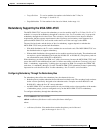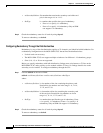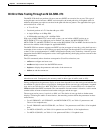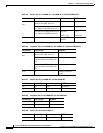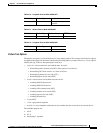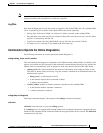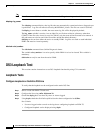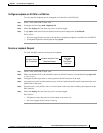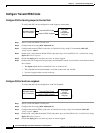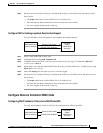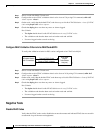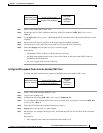
6-58
Cisco MGX 8230 Edge Concentrator Installation and Configuration
Release 1.1.31, Part Number 78-11215-03 Rev. B0, May 2001
Chapter 6 Card and Service Configuration
DS3 Loopback Test
Note Note: Do not use oldclrlock while another instance of oldiags is running on the shelf.
oldsplog <log_name>
The oldsplog command displays the log files that are automatically created each time a diagnostic test
is performed. Log files are named onlinediag.MONTHDAY_hh:mm. The files are saved in C:DIAG.
If oldsplog is run without a variable, the most recent log file will be displayed by default.
The log_name variable is used to view an older file or a file that resides in a directory other than
C:DIAG. If the file to be viewed is saved in C:DIAG, only the name of the file needs to be entered. A
full path name can also be used if the file resides outside the default directory.
oldsplog can be run from either the active or standby PXM1. Log files are saved on each individual
PXM1 and must be viewed separately.
oldclralm <slot_number>
The oldclralm command clears Online Diagnostic alarms.
The variable <slot_number> is used to specify which PXM1 slot is to be cleared. This variable is
mandatory.
oldclralm can only be run from the active PXM1.
DS3 Loopback Test
This section contains instructions to test DS3 loopback functionality using CLI commands.
Loopback Tests
Configure Loopback on the Entire DS3 Line
To verify that the loopback can be configured on the entire DS3 line:
Step 1 Select a node with PXM-T3 back card.
Step 2 Configure the line using cnfln -felpbnum 30.
Step 3 Check that dsplog does not show any errors or alarms logged.
Step 4 Using dspln, check that FarEndLoopbkLineNum has been configured to be ds3line.
Pass Criteria:
• No errors logged on the console or the log due to configuring loopback on PXM-T3.
• Configured loopback can be displayed using dspln.




